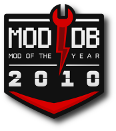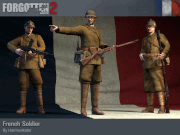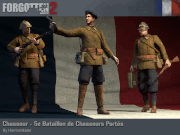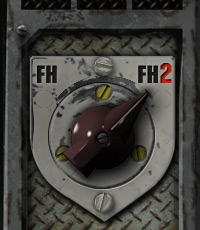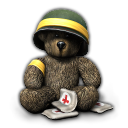 |
||
|
|
||
 |
||
|
The Road to Forgotten Hope 2.6 - Part 106.05.2022 18:00 GMT 
Hello and welcome back to another Forgotten Hope 2 update. We once again come around to announcing a major release. This time it has been 2 years in the making, but now we are finally ready to release version 2.6 on: Friday 13th May 2022 As you are no doubt aware, 2.6 is mainly focused on adding the Invasion of France in 1940, and brings with it all manner of new weapons, vehicles and 3 maps featuring the French. But it isn't just this new theatre, 2.6 also brings a multitude of changes and additions to our other fronts, including an additional Eastern Front map. We'd like to thank you all for sticking with us while we worked to get things just right - for keeping our servers populated and playing with us. Especially for turning up to the Dev Memorial Event last year. We'd also like to thank our team of betatesters for their work finding problems and helping get everything polished. Last but not least, none of this would be possible without the web hosting generously provided by Fluestertuete. And what better way to start things of with than the excellent trailer put together by Hawk. Additionally we'd like to credit Olivier Debras of Bataille d'un jour for his artwork used as our release banner. We will also be having a Dev Stream on Sunday at 1800 UTC hosted by FatJoe on his Twitch channel that will show off some of the new content. Please feel free to drop in and ask any questions you might have about the new content. Finally today we are showing off the eagerly awaited French playermodels. In the thirties the French Army was only the shadow of its former self. The losses of the Great War greatly marked French society, empowering pacifism and a defensive doctrine centred around the Maginot Line. Compulsory military service time was reduced to one year, with soldiers divided into active units and class A and B reservist units. The modernisation of the army would only begin in 1935, spurred on by the rapid German re-armament. However, the huge modernisation effort could not save the French army from its backward-looking high-command. Unable and unwilling to go on the offensive it would be beaten by the Blitzkrieg through the Ardennes. From the 2.7 million French soldiers fighting in the campaign around 100000 soldiers would be killed and 600000 captured, with 1,2 million more captured after Petain’s call to stop the fighting. Our French playermodels were made by Harmonikater with the help of CptBocquier. Chasseurs are the standard light infantry units of the French Army, tasked with recon duties and special operations to disrupt enemy activity. The corps, full of traditions like the dark blue color or the hunting horn emblem, found its modern origins in the late 18th Century. The Chasseurs become famous notably during the First World War, gaining the nickname schwarze Teufel (Black Devils - referring to their darker blue uniforms) from their German adversaries in reference to their dark blue uniforms and their ferocity. In 1940, three types of Chasseurs could be found in the French Army: Chasseurs à Pied, on foot or motorized like the regular infantry units; Chasseurs Alpins, experts in mountain warfare; and Chasseurs Portés, specially motorized with armoured carriers. The latter were formed in 1937 to follow the newly formed Divisions Cuirassées de Réserve (DCR). The 5e Bataillon de Chasseurs Portés of 1940 was one of the various iterations of the 5e Bataillon de Chasseurs, a unit that was formed and dissolved multiple times between 1815 and 1962. As a part of the 1e DCR, it was engaged in the Dyle-Breda manoeuvre and took part in the battle of Flavion. Suffering heavy casualties, the 1e DCR would be reformed on May 31st and continue to fight during Fall Rot. Avoiding capture, the unit was demobilized after the armistice. Our Chasseur playermodels were made by Harmonikater with the help of CptBocquier. In 1923 Recon Groups were created from active squadrons from cavalry units and attached to regular infantry divisions (GRDI) or army corps (GRCA). Equipped with machineguns and antitank guns, some of those would also receive trucks, motorbikes, side-cars, and even armored cars. These groups would be tasked with recon duties, skirmishes, and reinforcement. Elite and reliable units, they can be distinguished from the regular infantry by their motorized type uniforms. The 6e GRDI was one of the few units equipped with armored cars and was attached to the 3e Motorized Infantry Division (DIM). The unit would take part in skirmishes around the Maginot Line and some of its armored cars would be send to the fighting in Norway. After the breakthrough at Sedan, they would hold Stonne on the first day of the battle and fought continuously after, finally being captured with the rest of the 3e DIM on June 18th. Our GRDI playermodels were made by CptBocquier from Harmonikater’s standard playermodels. With the current events in Ukraine, we feel that it is important to highlight the good work of Médecins Sans Frontières in helping people in need. If you wish to donate to them, please follow the link above. That's all for today, but be sure to come back tomorrow for Part 2. Until then, feel free to visit our Discord, our public forums, our Twitter, our subreddit, and/or Facebook pages to discuss this update and other news. |
|
||||
 |
||||||



















